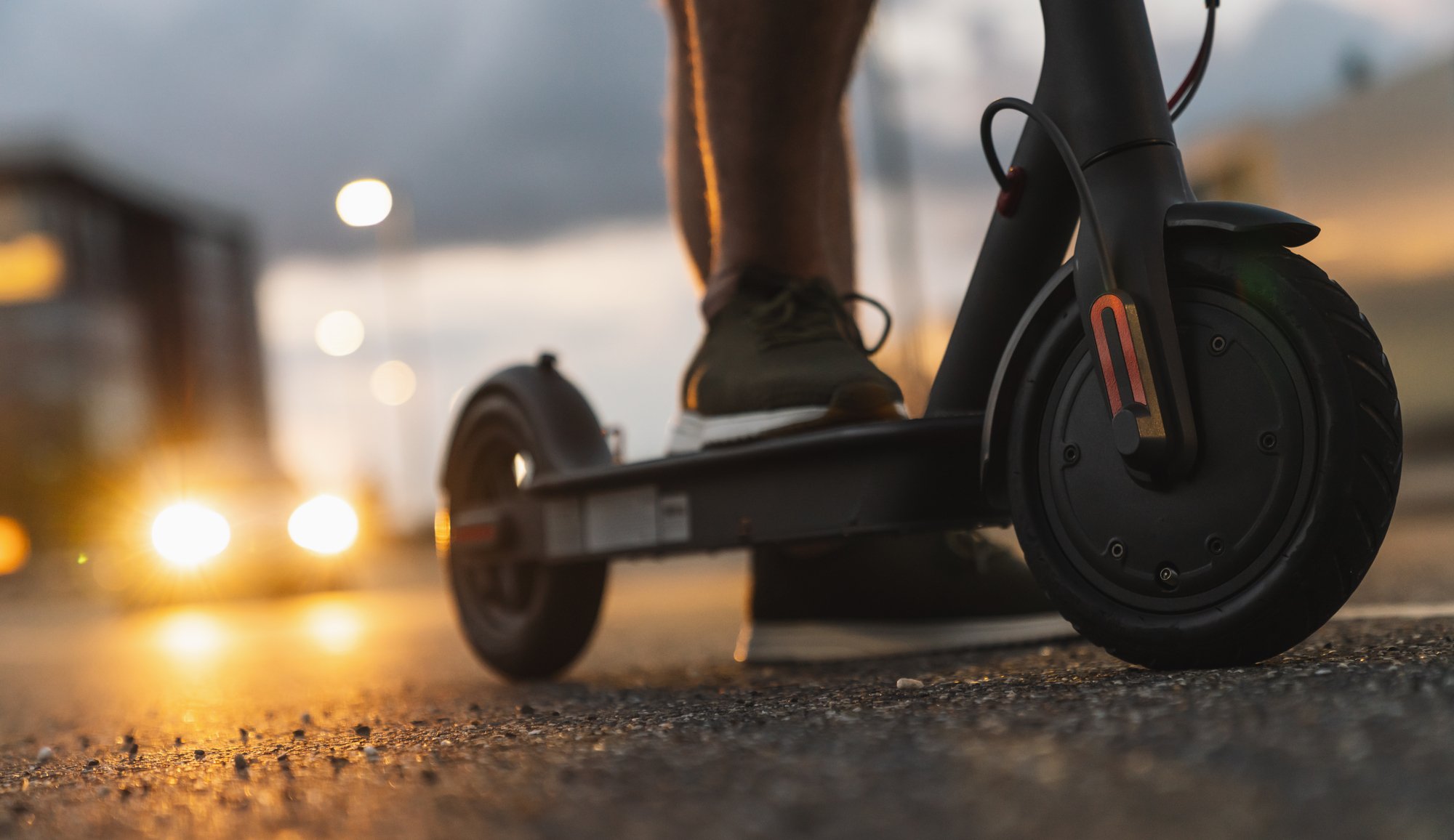The average electric scooter has a range of 20-40 miles per charge. Electric scooter range varies based on battery capacity and riding conditions.
Electric scooters have surged in popularity as a versatile mode of urban transport. They offer a convenient and eco-friendly alternative to traditional vehicles, particularly for short to medium distances. As technology advances, manufacturers strive to improve battery life, which directly impacts scooter range.
Consumers assess this key performance indicator to determine the best scooter for their daily commute or leisure rides. Riders must consider factors such as the scooter’s battery size, motor efficiency, total weight, terrain, and riding habits to gauge the accurate distance they can travel on a single charge. In an era where sustainability is paramount, electric scooters provide a promising solution with the bonus of cost savings on fuel and maintenance.
Understanding Range Factors
An electric scooter’s range is a vital aspect that significantly influences the user experience. Understanding the factors that affect this range can help riders make informed decisions and optimize their scooter’s performance. From the battery’s capacity to the environmental conditions, a multitude of variables play a crucial role in determining how far an e-scooter can travel on a single charge. Let’s dive into the details that every electric scooter enthusiast should know.
Battery Capacity And Technology
- Lithium-ion Batteries: Reliable and efficient, offering better performance and range.
- Nickel-Metal Hydride (NiMH): Older technology, heavier and provides less range.
- Lead-Acid: Inexpensive but bulky and offers the shortest range due to lower energy density.
Weight And Load Factors
| Scooter Weight | Range Effect |
|---|---|
| Lightweight | Longer range |
| Heavyweight | Shorter range |
Terrain And Environmental Impacts
- Surface Type: Smooth concrete provides less resistance than off-road terrain.
- Hill Climbing: Steeper inclines demand more power, reducing range.
- Wind Resistance: Headwinds increase energy consumption; tailwinds can extend range.
- Temperature: Extreme temperatures can degrade battery efficiency and range.
Optimizing Riding Practices
Optimizing your riding habits can not only enhance your electric scooter’s range but also improve its overall performance and longevity. Developing efficient acceleration and braking practices, maintaining an ideal cruising speed, and planning your routes strategically can lead to significant energy savings. Let’s dive into how you can make each trip on your electric scooter both enjoyable and energy efficient.
Efficient Acceleration and Braking
Efficient Acceleration And Braking
- Start Slow: Gently twist the throttle to gradually build up speed.
- Anticipate Stops: Release the throttle ahead of time to utilize regenerative braking.
- Use Brakes Sparingly: Avoid frequent or hard braking to reduce energy loss.
Cruising Speed and Energy Conservation
Cruising Speed And Energy Conservation
- Find the Optimal Speed: Ride at a speed that feels smooth and effortless.
- Avoid High Speeds: Traveling at maximum speed increases wind resistance and power use.
- Read the Manual: Check your scooter’s manual for recommended cruising speeds.
Strategic Route Planning
Strategic Route Planning
Choosing the right path can drastically affect your electric scooter’s range. Factors like terrain, traffic, and road conditions play a significant role in energy consumption.
- Choose Flat Terrain: Slopes and hills require more power to ascend—plan routes on flatter ground where possible.
- Avoid Rough Surfaces: Rough or uneven terrain can significantly decrease your scooter’s range by increasing resistance.
- Consider Traffic Flow: Stopping and starting in traffic consumes more energy—aim for routes with smooth traffic conditions.
Performance Upgrades For Extended Range
Boost your electric scooter’s range with high-quality performance upgrades, ensuring longer rides between charges. Select the right components to maximize efficiency and extend your scooter’s capability for extended adventures.
Upgrading Battery Systems
- Installing a higher capacity battery offers more power storage, directly extending the scooter’s range.
- Exploring advanced battery technologies such as lithium-ion or lithium-polymer can yield lighter options with higher energy densities.
- Regular maintenance, including proper charging habits and storage conditions, ensures peak battery performance over time.
Lightweight Materials And Accessories
- Aluminum or carbon fiber components reduce overall weight while maintaining strength and durability.
- Opt for accessories that provide utility without adding unnecessary heft—functionality meets featherweight with every choice.
Aerodynamic Enhancements
Wind resistance plays a role in how efficiently an electric scooter travels. Aerodynamic upgrades can reduce drag and help conserve battery power for increased range. Implementing elements like:
- Sleek designs, from frame construction to handlebars, minimize air resistance.
- Streamlined accessories, such as cargo carriers designed with aerodynamics in mind, maintain speed without the drag.
Maintenance For Range Enhancement
Regular upkeep is key to maximizing your electric scooter’s range. Implementing consistent battery care and tire maintenance can significantly extend travel distance.
Battery Care And Charging Best Practices
- Avoid full depletion: Try not to let the battery drain completely. Recharging before it falls below 20% can preserve its longevity.
- Maintain moderate temperatures: Extreme temperatures, be it hot or cold, can degrade your battery. Store and charge your scooter in a temperature-controlled environment.
- Slow and steady wins the race: A slower charging rate is preferable. If time allows, opt for a standard charger over a fast one to maintain battery health.
Tire Maintenance for Reduced Friction
Tire Maintenance For Reduced Friction
- Regular pressure checks: Under-inflated tires create more resistance. Keep them inflated to the manufacturer’s recommended levels.
- Inspections for wear and tear: Replace tires with visible damage or worn tread to maintain efficient traction and reduce drag.
- Alignment checks: Ensure wheels are properly aligned for smoother rides and less energy consumption.
Mechanical Inspections and Tune-Ups
Mechanical Inspections And Tune-ups
- Regular inspections: Look over the scooter for loose parts or unusual noises that could indicate mechanical problems.
- Brake adjustments: Taut or misaligned brakes can create unnecessary drag. Ensure they’re well-adjusted for efficient stopping without the drag.
- Lubrication: A well-oiled machine reduces friction in moving parts, directly linking to ease of motion and battery conservation.
Real-life User Experiences
Electric scooters have surged in popularity as a convenient form of urban transport. One aspect that many users are particularly interested in is the range of their electric scooter and how it holds up under real-world conditions. Real-life user experiences can offer valuable insights into how to maximize range, manage any encountered challenges, and benefit from practical advice. Here are some of the stories and tips shared by the electric scooter community:
Success Stories Of Range Maximization
- Optimization on Wheels: A user from a hilly city shared how they used regenerative braking to add extra mileage on daily commutes.
- Strategic Charging: Another rider carries a portable charger and makes use of public charging spots to ensure they can always reach their destination.
User Challenges And Solutions
Riders frequently encounter issues that can limit the range of their electric scooters. Fortunately, many have found ingenious solutions to overcome these challenges.
| Challenge | Solution |
|---|---|
| Cold Weather Impact | Insulating the battery and storing the scooter in a warmer environment to preserve battery life. |
| Unexpected Battery Drain | Consistent battery health checks and maintenance to ensure no surprises. |
Tips From Seasoned Riders
- Avoid frequent full-throttle acceleration; it drains the battery faster.
- Maintain your tires at the correct pressure to reduce rolling resistance.
- Travel light – extra weight can significantly reduce your scooter’s range.
All these experiences combined provide a robust framework for both existing and potential electric scooter riders wanting to enhance their vehicle’s range.

Credit: www.electricscooterinsider.com
Conclusion
Navigating the world of electric scooters can be exhilarating. The range is key to matching your lifestyle with the right model. Remember, battery capacity and rider habits shape your journey’s length. Choose wisely to ensure your e-scooter is a trusty steed for all your urban adventures.
Ready, set, explore!

